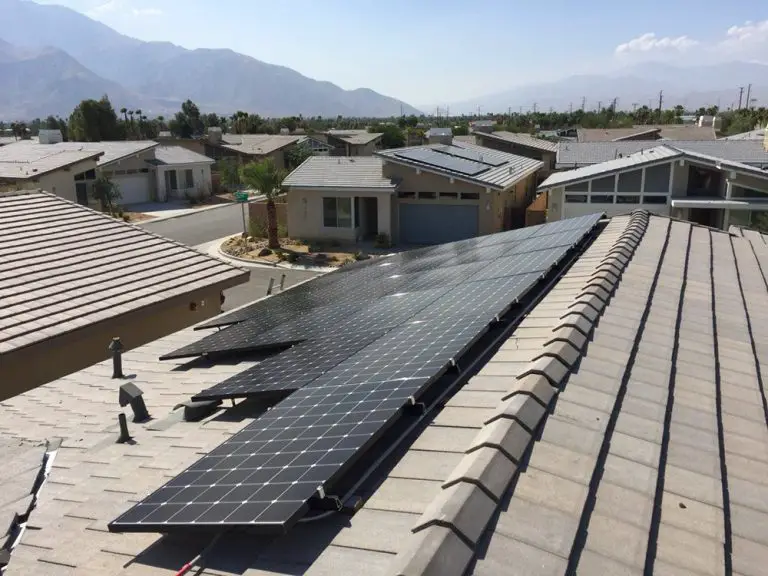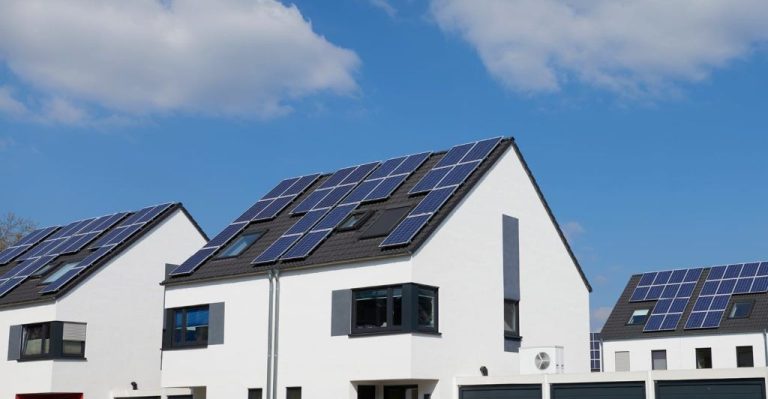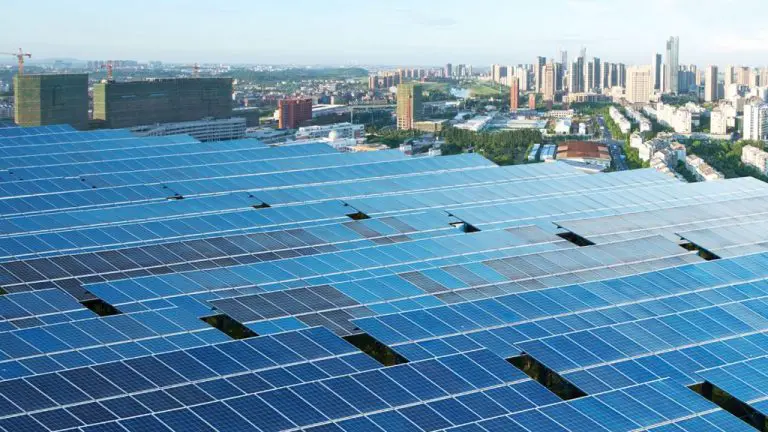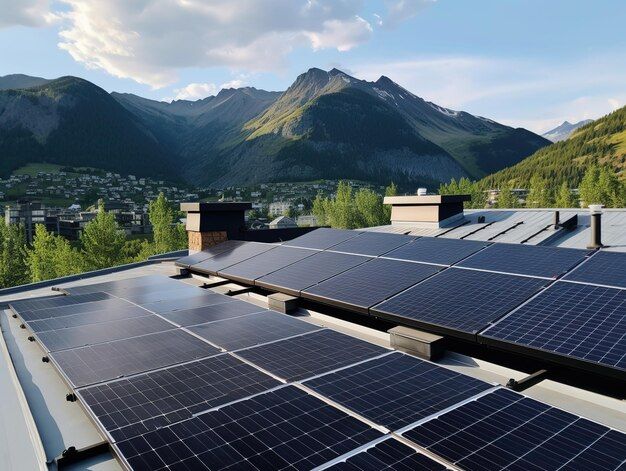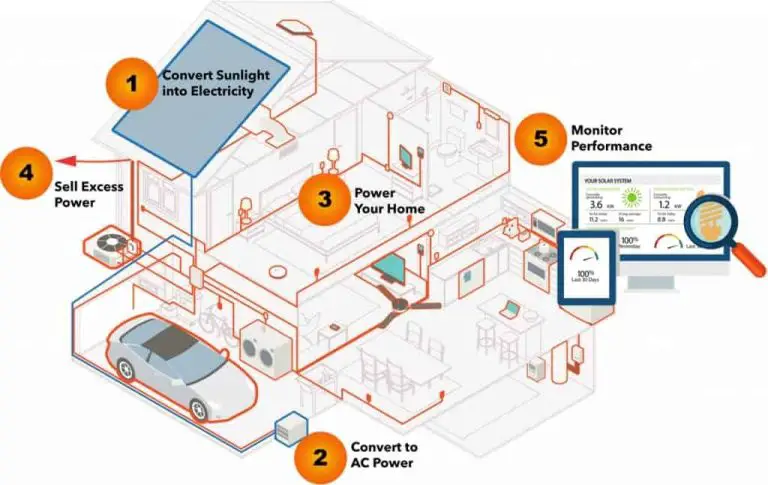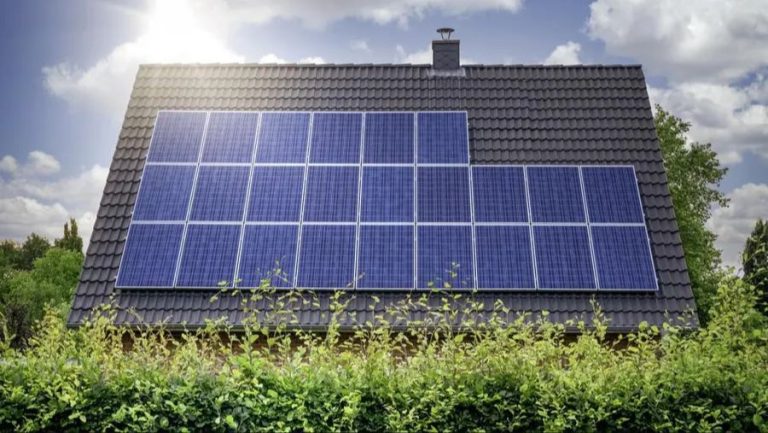How Much Power Does A Smartflower Generate?
What is a Smartflower?
A Smartflower is a self-contained solar panel system designed in Austria that opens and follows the sun like a sunflower to maximize solar energy production throughout the day. The unique design was first developed around 2008 by an Austrian startup company called Smartflower Energy Technology GmbH (Smartflower).
The Smartflower consists of 12 unfolding solar panels in a biomimetic “petal” design that sits atop a centralized pole. The solar panels are attached to metal arms that extend out from the pole. In the morning, motors and gears slowly rotate the panels to an east-facing direction to soak up the morning light. As the sun moves across the sky during the day, sensors and a tracking algorithm automatically adjust the angle of the panels so they are always directly facing the sun. At night, the panels fold up into a compact bud shape for protection. This sun-tracking system allows the Smartflower to generate up to 40% more power than fixed rooftop solar panels over the course of a year.
The entire structure is self-contained and pre-assembled. It can be installed in just a few hours by anchoring the pole in the ground at a site. The Smartflower connects to the utility grid or a battery system to deliver renewable solar energy. It is designed to withstand wind speeds up to 130 mph when fully folded up.
Smartflower Specifications
The Smartflower has been designed with compact dimensions and high quality materials to withstand outdoor conditions.
According to the technical specification sheet from the manufacturer Energetica, the Smartflower has the following dimensions when fully deployed:1
- Diameter: 4.5 m (14.7 ft)
- Height: 3.5 m (11.5 ft)
- Ground clearance: 0.15 m (6 in)
When closed, the Smartflower has a height of only 1.75 m (5.7 ft). This compact size makes it easy to transport and install.
The total weight of the Smartflower unit is approximately 350 kg (770 lbs). The main materials used in its construction include:1
- Aluminum
- Tempered safety glass
- High-efficiency solar cells
The aluminum body and tempered glass provide weather resistance and durability. The solar cells have an efficiency rating of up to 23%.
How a Smartflower Creates Electricity
A Smartflower uses photovoltaic solar panels to convert sunlight into electricity. The process works like this:
- Sunlight hits the solar cells made of semiconducting materials like silicon.
- Photons from the sunlight knock electrons loose in the solar cells.
- The flow of these electrons generates an electric current.
- Inverters convert the DC output into usable AC electricity.
The key parts of a Smartflower that generate electricity are:
- Solar panels – 12 petal-shaped panels made of monocrystalline silicon solar cells.
- Inverters – located in the center column to convert DC to AC current.
- Batteries – Lithium-ion batteries to store excess electricity.
As the Smartflower tracks the sun, the solar panels maintain the optimal angle to maximize electricity generation from sun exposure. This solar photovoltaic process converts clean, renewable solar energy into usable electricity for homes and businesses.
Power Output of a Single Smartflower
The peak power output of a single Smartflower solar panel system is 2.5 kilowatts (kW). This refers to the maximum amount of electricity that can be generated in ideal sunny conditions when the panels are pointed directly at the sun.
According to Solar.com, the average annual energy output of a Smartflower ranges from 3,800-6,200 kilowatt-hours (kWh). This factors in reduced sunlight on cloudier days as well as the movement of the sun throughout the year. On average, a single Smartflower can generate enough electricity to power a typical home. However, actual output depends on location, sun exposure, and local weather patterns.
Factors That Affect Power Generation
There are several key factors that impact the amount of power a Smartflower solar system can generate:
Sunlight Intensity
The intensity of sunlight directly affects solar power output. Areas that receive more direct sunlight per day and have fewer cloudy days will generate more power from the Smartflower. According to the manufacturer, the ideal solar irradiation level for maximum output is 1,700 kWh/m2 per year [1].
Temperature
Ambient temperature also plays a role. Solar panels become less efficient as temperatures rise. Cooler environments allow solar panels to operate at higher efficiencies. The Smartflower is engineered to withstand temperatures from -22°F to 122°F (-30°C to 50°C) [1].
Geographic Location
Location impacts sunlight intensity and temperature. According to Smartflower, the system generates the most energy in the American southwest where sunlight levels are highest. Output is lower in northern latitudes. Ideal locations have limited storms, cloud cover, and air pollution [2].
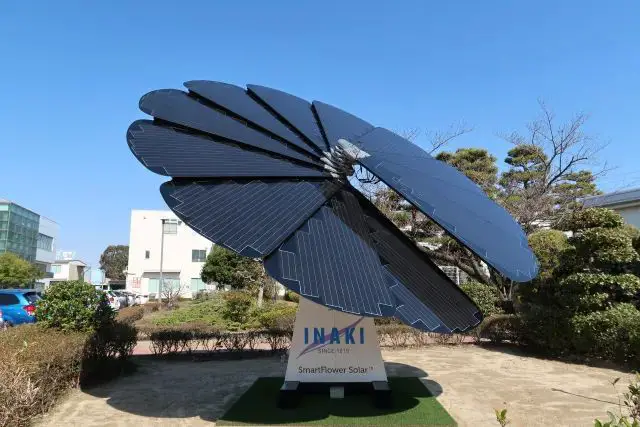
Applications and Use Cases
The Smartflower has several main applications and use cases that make it an attractive solar option for homeowners, businesses, and remote locations:
Off-Grid Residential
The Smartflower is a great option for off-grid homes looking to go solar. According to https://smartflower.com/commercial/, the Smartflower can provide 100% of the electricity needs for an energy efficient off-grid home. With battery storage, the system can provide continuous power day and night. The Smartflower’s all-in-one integrated design makes it ideal for isolated residential settings.
Grid-Tied Residential
For homes connected to the electric grid, the Smartflower offers a turnkey solar system to reduce electricity bills. As a grid-tied system, excess electricity produced during the day feeds back into the grid, spinning the home’s electricity meter backwards. According to https://www.cnet.com/home/energy-and-utilities/smartflower-solar-review-beautiful-solar-sculpture/, the Smartflower can produce enough solar energy to zero out monthly electricity bills.
Commercial Installations
The Smartflower is also used to power businesses and provide solar energy to commercial sites. The modular, scalable design allows multiple Smartflowers to be installed together on commercial properties. According to https://smartflower.com/products/, the eye-catching solar flowers can attract customers and showcase a business’s sustainability practices. Ideal commercial uses include office buildings, retail stores, schools, hotels and more.
Costs and Financials
The upfront cost of a Smartflower system is substantial compared to traditional solar panels. According to Solar.com, the average price ranges from $25,000 to $30,000 before incentives and tax credits. CNET reports the basic 2.5 kW Smartflower system costs $39,950 plus shipping and installation, coming out to around $10 per watt.
Operating costs are low since there are no moving parts and minimal maintenance required. The panels and equipment come with 10-25 year warranties as well. Electricity costs from a Smartflower work out to $0.10-0.15 per kWh according to SolarReviews, which is less than the average utility rate of $0.14 per kWh.
While Smartflower has a higher upfront investment than fixed tilt solar panels, its increased efficiency and energy production provide quicker payback and lower lifetime costs per kWh generated.
Comparisons to Traditional Solar Panels
The Smartflower has some notable advantages compared to traditional solar panels:
- It’s an all-in-one system that’s easy to install. Traditional solar panels require separate inverters, wiring, and racking.
- The Smartflower tracker follows the sun for optimal solar production. Fixed rooftop panels produce less energy overall. (1)
- With its integrated design, the Smartflower takes up less space than a comparably sized rooftop array.
- The unique, high-tech appearance makes a visual statement. Traditional panels tend to look utilitarian.
However, the Smartflower also has some limitations versus rooftop solar:
- It produces less total power for the price. A similarly priced rooftop system would generate more electricity. (2)
- As a ground mount, it may not be allowed in some neighborhoods or require permits. Rooftop panels generally don’t have restrictions.
- It requires an open, sunny location with no obstructions. Rooftop systems can work on any sunny roof.
- It’s still a new product with limited long-term reliability data compared to traditional panels.
Overall, the Smartflower offers unique advantages but higher costs per watt. It’s best for homeowners who want a stylish, automated system and have the right site conditions.
Environmental Benefits
The Smartflower provides significant environmental benefits by generating clean, renewable solar energy instead of relying on fossil fuels like coal and natural gas. Each Smartflower avoids over 4 tons of carbon emissions per year compared to the average US grid mix, according to analysis by Smartflower [1]. With no greenhouse gas emissions or other pollution produced during operation, installing Smartflowers represents a sustainable way to power homes and businesses.
The amount of emissions avoided is equivalent to taking around 1 car off the road each year [2]. A single Smartflower can generate enough electricity over a year to power a typical US home, avoiding over 4 tons of CO2 emissions that would have been produced if that home relied on grid electricity [3]. Widespread adoption of the Smartflower and other solar technology is crucial for reducing the impacts of climate change and building a clean energy system.
[1] https://smartflower.com/blog/gomunoinaki-invests-in-sustainable-development-with-innovative-smartflower-solar-solution/
[2] https://www.epa.gov/energy/greenhouse-gas-equivalencies-calculator
[3] https://smartflower.com/commercial/
The Future of Smartflower
Smartflower has continued to innovate and improve its solar technology in recent years. According to the Smartflower website, the company is committed to making solar energy more accessible and affordable through intelligent design (The Future Is Solar).
The latest model, the Smartflower POP+, builds on previous generations with expected improvements in efficiency, durability, and ease of installation (Solar Flower Designs with SmartFlower — The Future is). By optimizing the solar tracking algorithm and weatherproofing the system, Smartflower aims to increase energy yield by up to 40%.
Looking ahead, we can expect to see larger capacity models capable of powering entire homes and businesses. There are also plans to enable intelligent energy management through cloud connectivity and smart home integration. As solar technology advances, the modular and adaptable design of the Smartflower makes it well-positioned to integrate new photovoltaic innovations and energy storage solutions.

